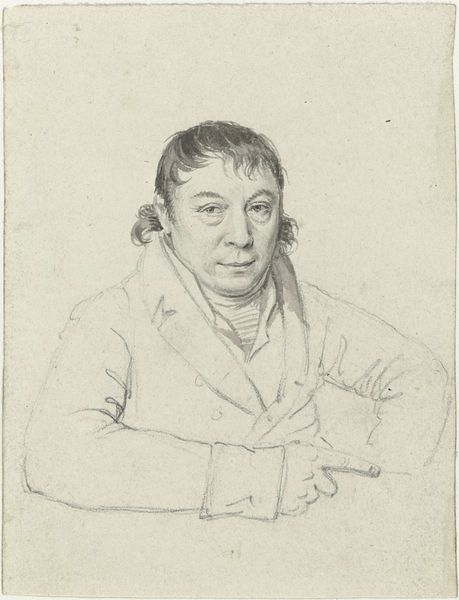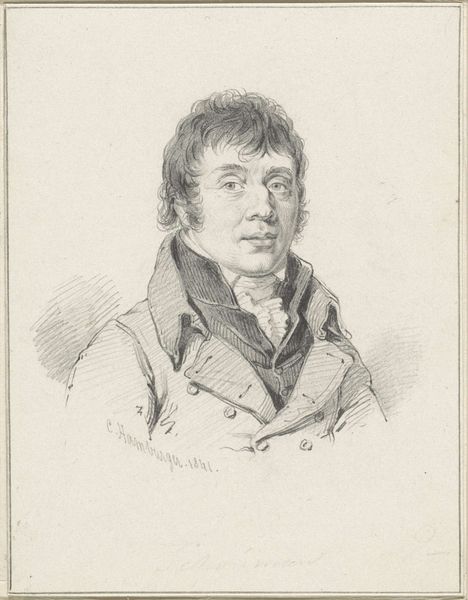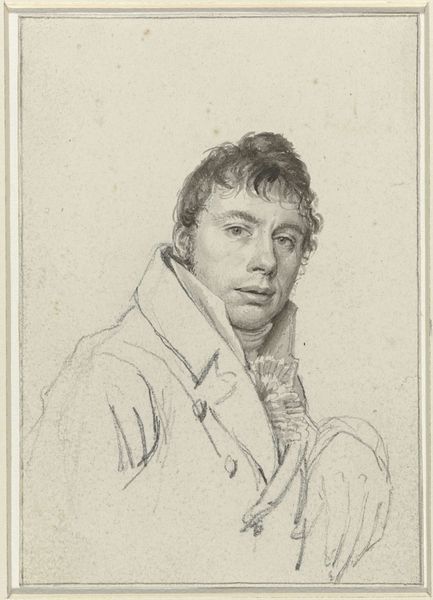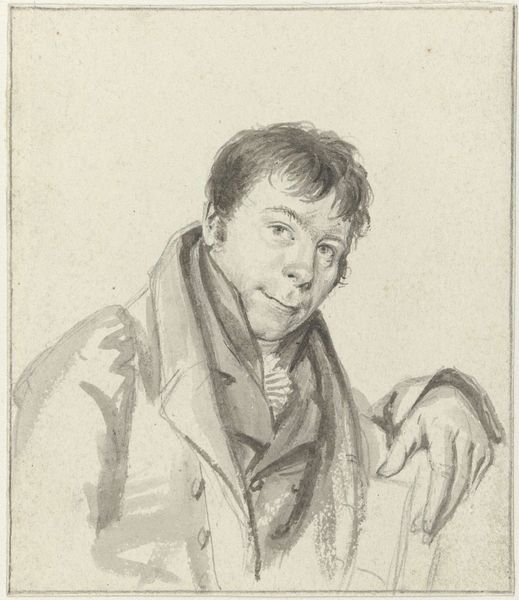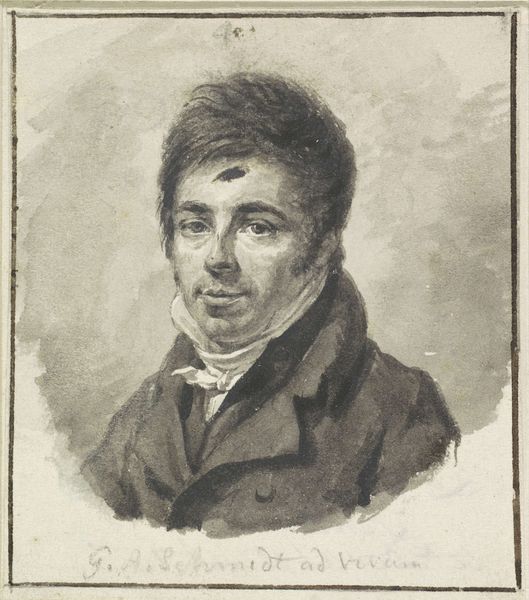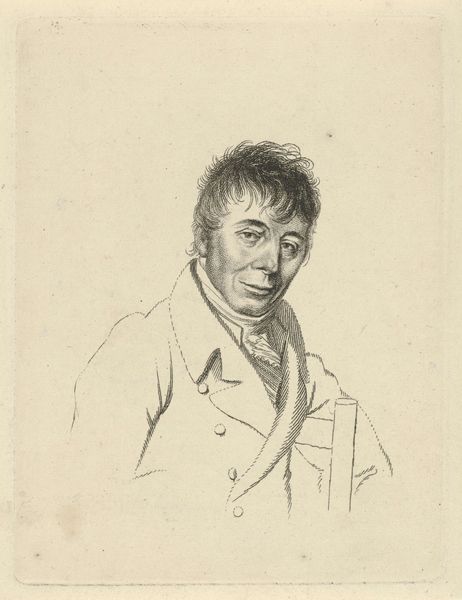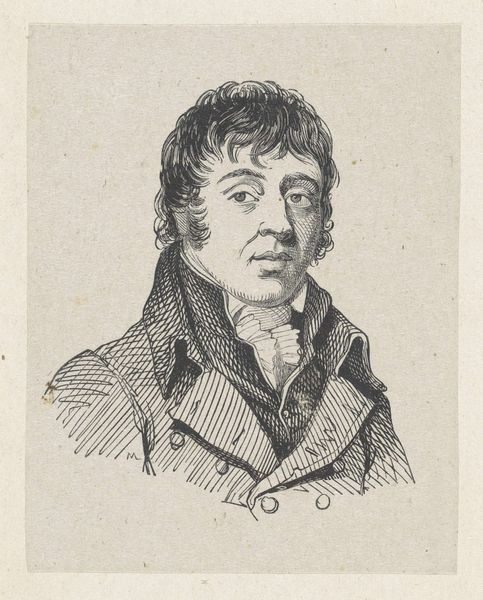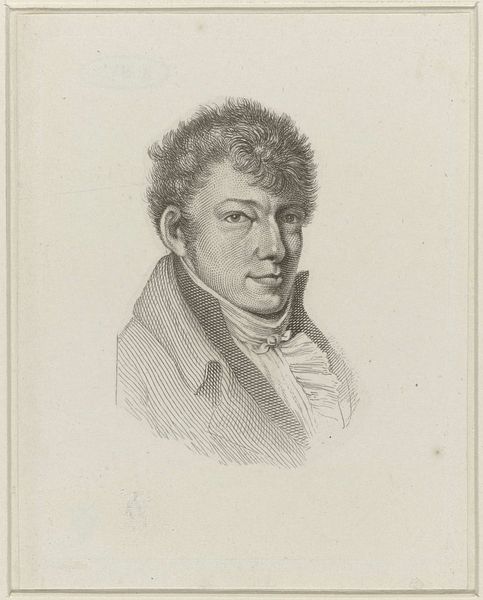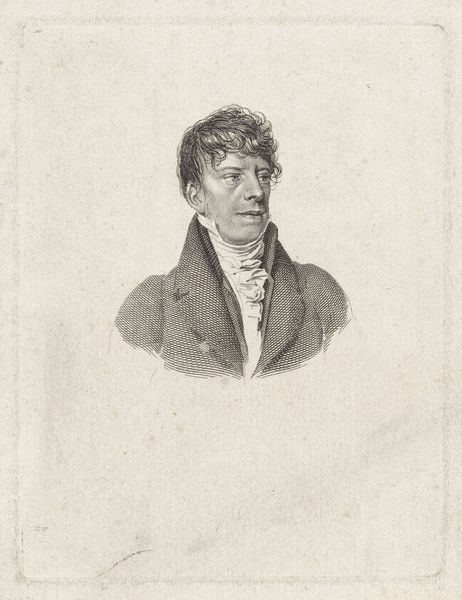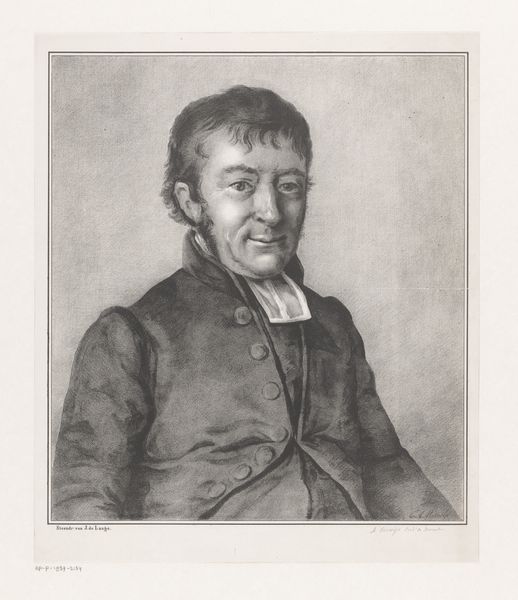
drawing, graphite
#
portrait
#
drawing
#
romanticism
#
graphite
#
realism
Dimensions: height 126 mm, width 86 mm
Copyright: Rijks Museum: Open Domain
Editor: Here we have Jacob Ernst Marcus's "Portrait of the Draughtsman Dirk Versteegh," created sometime between 1784 and 1826. It's a graphite drawing, currently held at the Rijksmuseum. It strikes me as very direct and somewhat reserved, a very...stiff, rendering of this artist, Mr. Versteegh. How do you interpret this work? Curator: That 'stiffness,' as you call it, is very telling, isn't it? While formally, it operates within the conventions of portraiture—and we could discuss its relation to realism and Romanticism—it also gives us a glimpse into the social codes of the late 18th and early 19th centuries. Look at the sitter’s pose, his clothes. How might those details speak to ideas around masculinity, class, and artistic identity at that time? Editor: I see what you mean! His posture and attire do present a carefully constructed image of bourgeois respectability. Do you think it's also fair to suggest it might also reflect the limitations placed upon artists and the prevailing gender dynamics of that time? Curator: Absolutely. Artists were increasingly negotiating their position within a changing social landscape. His crossed arms could signify defense or introspection, perhaps even subtly hinting at the constraints of a patriarchal society or the struggle for artistic recognition. We have to remember how portraiture often functioned to reinforce social hierarchies and power structures, so where might Versteegh position himself with this portrait of another artist? Editor: So it's more than just a likeness; it’s a social and political statement as well. I hadn't considered it in such depth. Curator: Precisely. Examining art through an intersectional lens—considering gender, class, race, and power—allows us to excavate deeper layers of meaning. Editor: Thank you. This has completely transformed how I view portraiture and its role in shaping social narratives. Curator: It's exciting to uncover the layers that make art history speak to our contemporary condition.
Comments
No comments
Be the first to comment and join the conversation on the ultimate creative platform.

